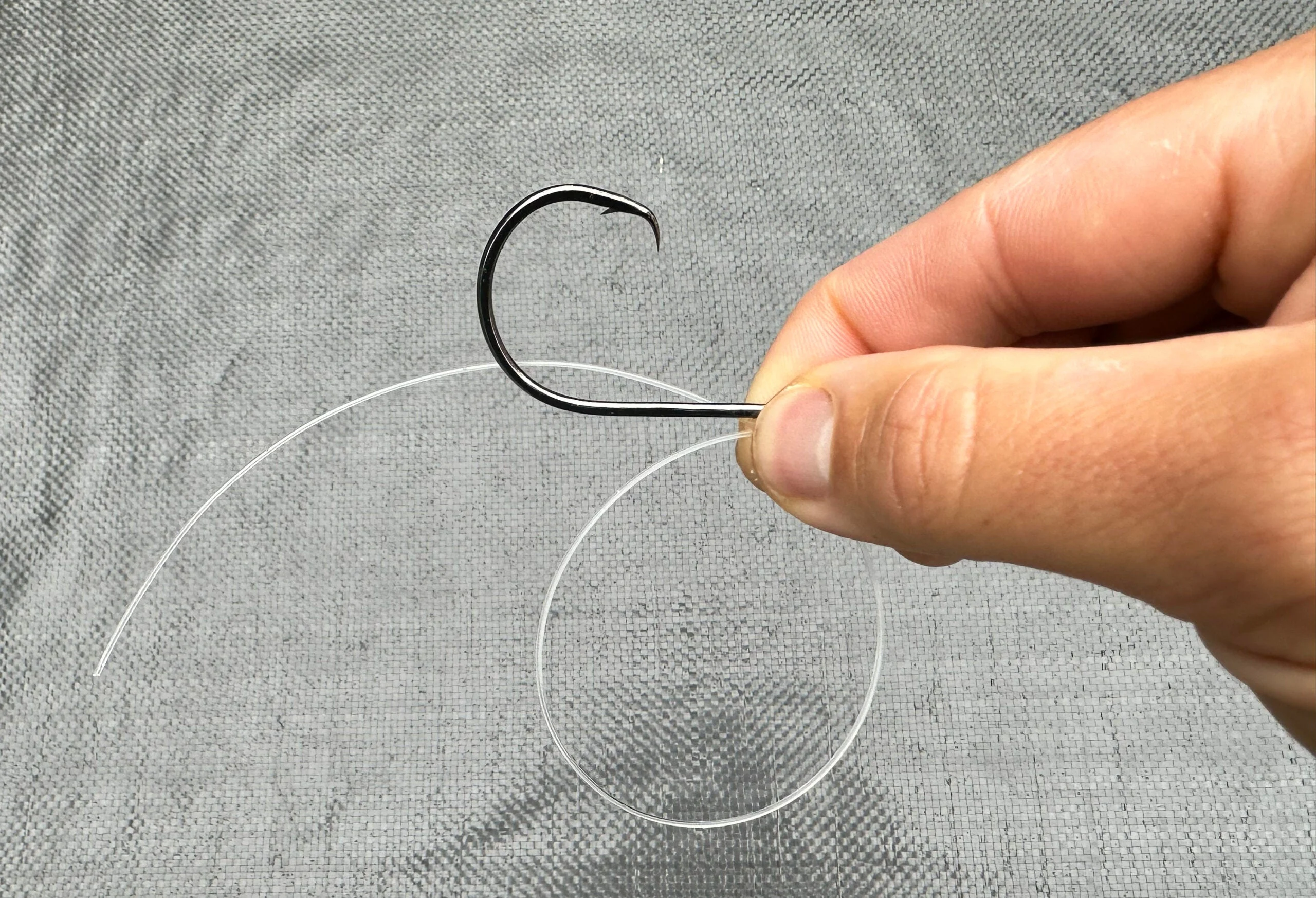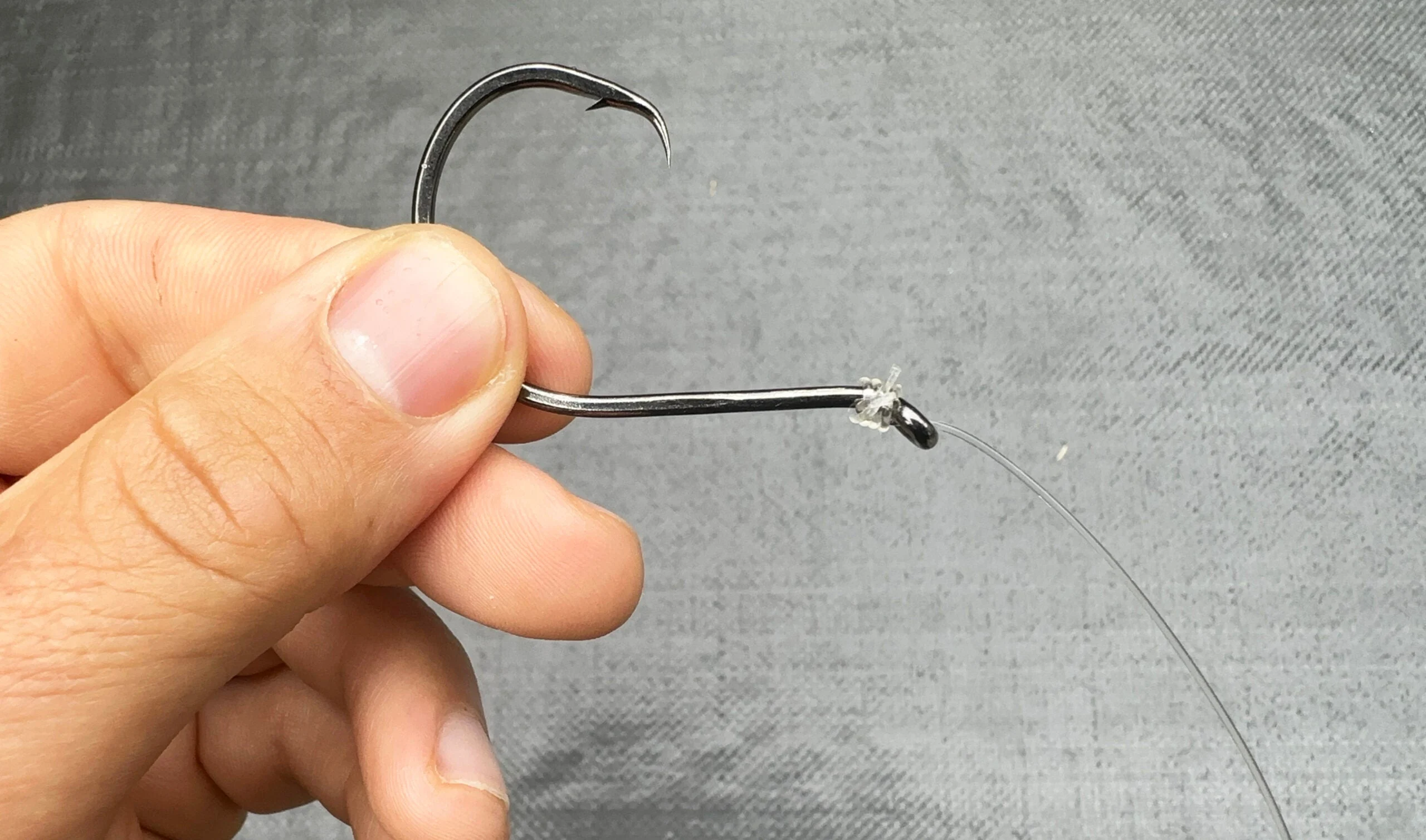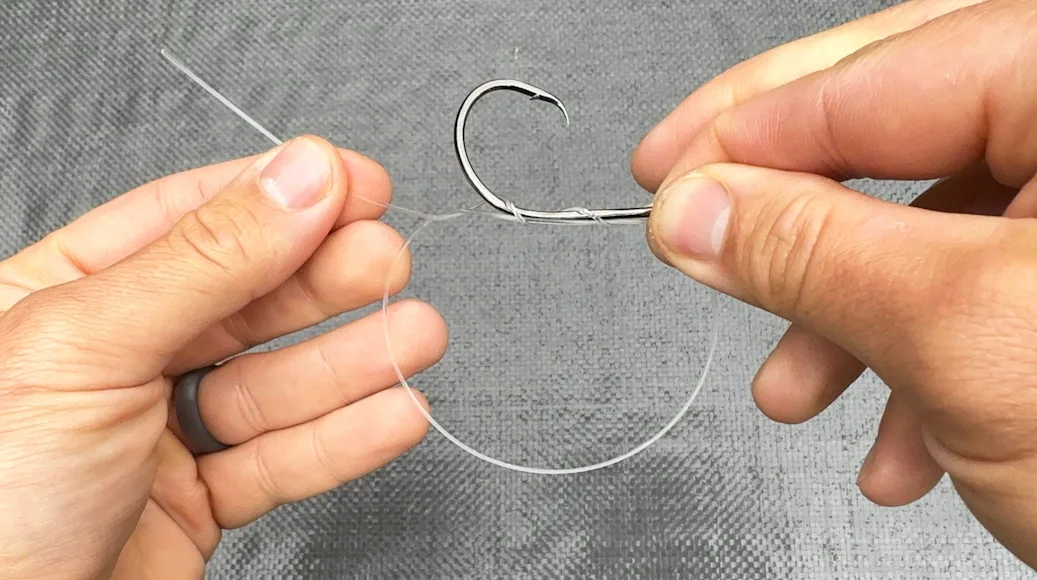We may earn revenue from the products available on this page and participate in affiliate programs. Learn more ›
Some of my earliest memories are of buying packs of pre-snelled hooks with my dad. When I was a kid, whether we were fishing worms for trout or dough balls for catfish, we used hooks pre-snelled on a heavy leader, complete with a pre-tied loop on the end for easy connection to our main lines. For many years, I gave very little thought to the actual knot, which creates a set of nice, neat coils around the shank of the hook. In fact, I didn’t learn how to snell my own hooks until my teenage years, and while pre-snelled hooks are still easily found in every tackle shop, I’m often surprised by how many folks don’t know how to snell a hook.
How to Snell a Hook
While tying a snell knot isn’t difficult, it does take practice. Though there are several methods, let’s break down what I believe is the easiest. If you need a visual reference, this video of the process makes it easy to follow.
See Easiest Snell Knot EVER!on YouTube
Hook Snelling: Step-by-Step Instructions
Step 1

Start by passing the end of your main line or leader through the eye of the hook from the front—the side of the eye facing the point. Pull approximately 8 inches of line through.
Step 2

Next, form a loop by moving the tag end back toward the hook eye. Pinch it at the shank just below the eye to hold the standing line and loop in place. You should have several inches of tag end remaining.
Step 3

Now, take the tag end and begin winding it around the shank toward the bend while passing it through the loop during each turn. The number of wraps will vary depending on the size of the hook you’re snelling and the diameter of the line. As a rule, however, the thinner the line, the more wraps you want to make. With 20- or 30-pound leader, six wraps may be sufficient; whereas with 8- or 10-pound line, eight to 10 will create a stronger connection.
Step 4

While keeping the loop and standing line pinched near the hook eye, slowly begin pulling the main line or leader away from the hook. Don’t pull quickly, as you want to make sure the coils on the shank form evenly and tightly. Once the coils are set, give the main line or leader and hook a sharp pull in opposite directions to really cinch the snell tight and jam it against the hook eye. Trim the tag end close to the knot.
Benefits of Snelling a Hook
Snelling a hook is a bit of lost art, primarily, in my opinion—because anglers at large are more interested in casting lures these days—a game in which a snell has little application. The snell knot is predominantly used by fishermen casting dead or live bait, and it’s designed to provide maximum strength and faster penetration when delivering that bait on a single hook. The snell is, in essence, made for fishing in its most simplistic form.
Snell Knot vs Other Fishing Knots
A snell is stronger than fishing knots commonly used to tie on a hook because instead of fastening to the eye of the hook, it’s wrapped around the shank of the hook and then snugged against the bottom of the eye. No matter how hard you pull a well-formed snell, you can’t make it slip over the wider base of the hook eye. If you’ve ever noticed how some hooks have an eye bent at an angle slightly perpendicular to the shank, it’s so a snell knot can butt up against it, seat tightly, and have even less chance of failure because it will jam against the angled eye.
When using a hook with an angled eye, you also get the added benefit of a faster, surer hook set when using a snell knot. Your main line or leader passes through that angled hook eye when snelling, making it impossible for the hook to rotate or twist.
When tying on a hook via an improved clinch knot or Palomar knot, you create a hinge as the knot and rotate around the eye. In some cases, a rotated hook can cause you to miss a fish, or even if you connect, the ability of the line to rotate can allow the fish to gain leverage or change the angle of the line during the fight. But a properly snelled hook will always remain perfectly in line with your fishing line, allowing you to maintain even pressure—no matter how hard a fish thrashes and head shakes.
Continued Reading…
Once you’ve mastered the lost art of how to snell a hook, check out some of our other how-to guides related to fishing hooks, including:
Fish Hook Sizes: A Beginner’s Guide to Hook Selection
How to Tie a Hook to Your Line: The 5 Best Knots


